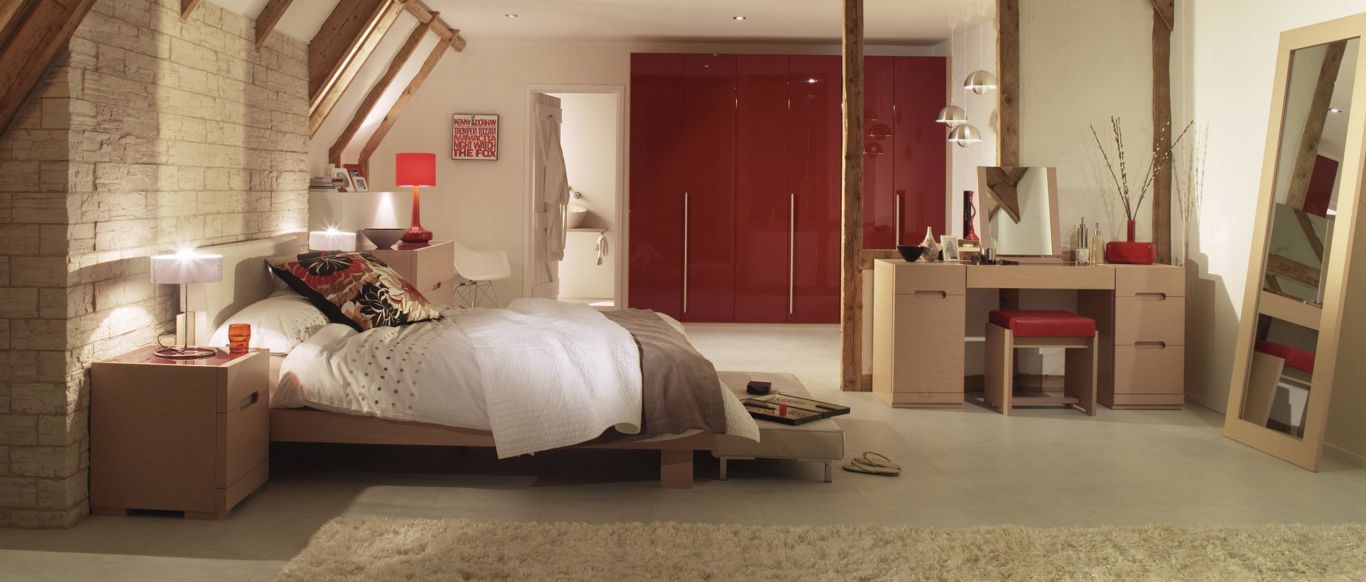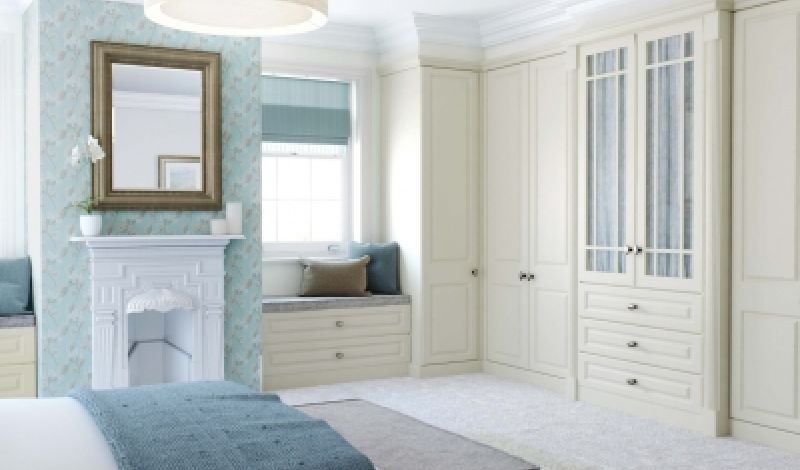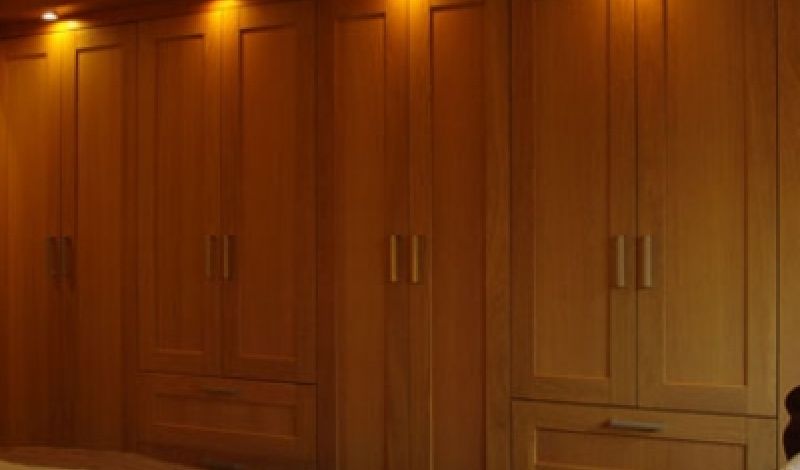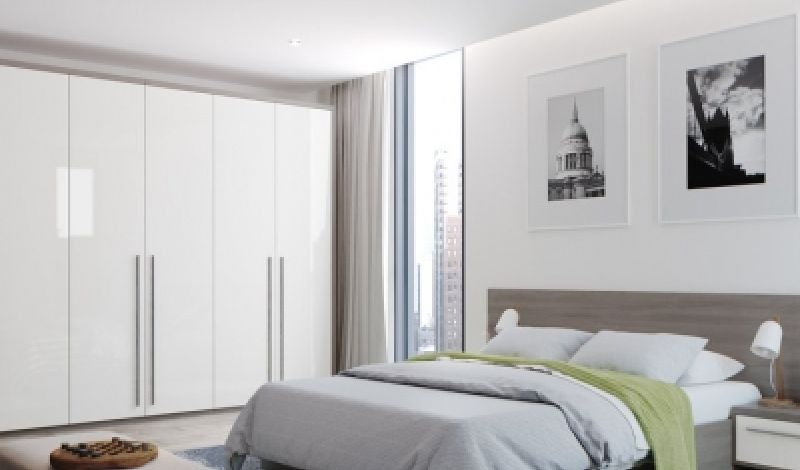Top 5 Design Tips For Small Bedrooms
 19
19Aug '19
If you’re wondering how to turn a small room into a relaxing, inviting yet practical sleeping space, have a look at some of our design tips here…
You may be used to seeing photos of large bedrooms with huge beds, sofas, dressing areas and even media cabinets spread across the pages of interiors magazines, but it’s important not to forget the primary purpose of a bedroom.
Although these rooms look great, essentially, a bedroom is for rest and sleep. You may find you sleep better if you don’t have too many distractions within easy reach!
There are bound to be some non-negotiable features required to create your perfect bedroom, however small, and you will almost certainly want to create the illusion of space as far as possible. Here’s some advice on how to achieve this...
1. Be Smart About Storage
Fitted furniture provides the most workable storage. Our Kbsa retailers will come to your property, assess the space you have and make suggestions as to the best way to use it efficiently.
Bespoke pieces can be made to fit even the smallest or oddest shaped spaces. The cupboards and drawers can be filled with useful compartments and shelving so that all items have a designated space.
If you like the idea of incorporating a desk, dressing table or craft table into the room, then a pull-out table could be the solution.
Choose an Ottoman bed, or a bed frame with drawers. If you want a television in the room, consider buying a bed with a screen in the footboard. Otherwise, it may be best to avoid a footboard, as they take up valuable space and could make a small room appear crowded.
For further storage inspiration, have a look at our guide on remodelling a master bedroom.
2. Decorate With Care
The lighter the colours used in the decoration of a small bedroom, the better. White reflects the light and makes the walls recede, making a small space seems larger.
Choose a shade that’s just off-white to inject a little warmth. Alternatively, a very pale sky blue can make a room feel more expansive.
Darker colours can still work, though. A deep blue or gunmetal grey can create a perception of depth and disguise the fact that the room is small. Try not to use too many different colours though, as you’ll be able to see where each section of the room stops and starts and this will highlight the smaller dimensions.
Wallpaper doesn’t have to be avoided either, as long as you opt for a paper with a large pattern or texture. This will ensure all the walls and the ceiling of the room will expand in size.
Meanwhile, we recommend keeping carpets neutral or paint floorboards a light colour.
3. Let There Be Light
If there is only one window in your small bedroom, letting in lots of light is clearly going to be tricky.
Keep the window clean, and don’t dress it with heavy curtains or fussy blinds - use a simple roller blind or some light voile panels. If you have the space and the budget, then investigate the possibility of installing a light tube to distribute as much daylight as possible into the room.
The more mirrored and reflective surfaces you can incorporate, the larger and lighter the room will appear. If possible, position two large mirrors opposite each other. Choose mirrored bedside tables or an acrylic chair to portray the illusion of increased space, too.
Use soft LED lighting in a variety of ways throughout the room; don’t rely on just one bright pendant light. Think, lamps with tall bases and small shades, spotlights and wall lights. Reflect these into a mirror if you can.
4. Be Minimalist
Minimalism is certainly having a moment thanks to Marie Kondo. Obviously, it’s pretty difficult to only keep things in your bedroom that ‘spark joy’, but have a thorough sort out of clothes, books, magazines and toiletries. Ask yourself whether you really will wear/use/read them again. If the answer is no, donate or recycle.
A clutter-free room is a relaxing environment. A tidy house really is a tidy mind. Studies have shown that clutter increases stress.
Once you’ve organised your belongings and chosen the appropriate storage, the problem of clutter should become a thing of the past. However, to increase the minimalist appeal of the room, there are lots of design tips you can try out. Here are a few more:
Keep the decor light and bright, from walls right on through to bed linen, curtains and blinds.
If you want to inject some colour or texture in any of these areas, choose geometric prints rather than fussy florals.
Install neat ‘floating’ shelves for books or bedside tables.
Attach lights to the walls by the bed or next to the desk/dressing table to reduce the amount of pieces on surfaces and visible cables.
Choose frameless mirrors and prints for the walls.
Clear acrylic furniture (chairs and side tables) will look neat and unobtrusive.
5 tips to create a relaxing bedroom for autumn/winter
5. For The Kids
Often, a smaller bedroom is the domain of a child/children. Children’s bedrooms can quickly become fairly chaotic, so it’s important that the furniture and storage is as functional as possible.
If the room is occupied by only one child, consider a cabin/high rise bed. This creates more valuable floor space, and a desk or chest of drawers can be housed underneath.
If two children are sleeping in the room, bunk beds are the ideal way to free up floor space. Even in a small spare bedroom that is regularly occupied by adults, bunk beds are an option if you want to find space for more guests! Bunk beds are available to buy with under bed storage drawers too.
Hooks are essential in a child’s bedroom as your little ones have so many things that need hanging up: from kit bags, to baseball caps and dressing gowns. If there are lots of hooks available, there is a stronger chance that these items will find their way off the floor.
Although it’s tempting, don’t allow the decor to make the room look too cluttered. Some pops of colour are great, but once all the toys and books are in place, they’ll provide plenty of character.
Floating shelves are a great alternative for childrens’ books and keepsakes, freeing up floor space and creating a feature wall that’s personal to the child.




